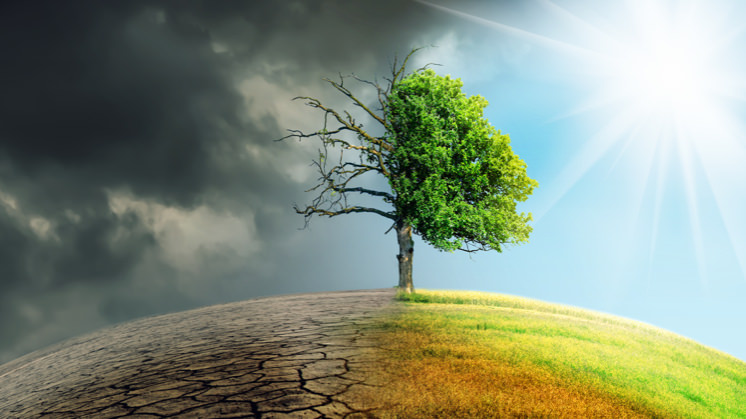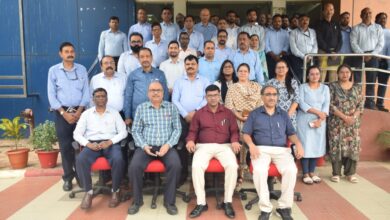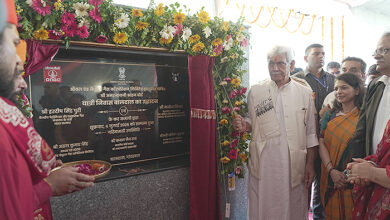Gender Priority Is Needed For Climate Change Adaptation, Says A Global Study: Nature
Study reviews 17000+ global studies and analysed 319 selected studies where gender and adaptation programmes have been documented

Adaptation Projects are being implemented to reduce climate risks and vulnerabilities due to Climate change impacts across the world. Gender and climate justice implications of different adaptation options are increasingly being felt . There are nine major sectors where climate change adaptation actions are taken, according to a recent research paper published in the prestigious journal – Nature – Humanities and Social Science Communications.
This study reviews 17000+ global studies and analysed 319 selected studies where gender and adaptation programmes have been documented through peer-reviewed research papers. The evidence shows both positive and negative impacts and some major red flags.
The authors in this study asked two key questions – first – do climate change adaptation options implemented through various projects in numerous contextsadvance or hinder gender equality (SDG 5)? Second, are the targets under SDG 5 sufficient to track the gender responsiveness of adaptation actions?
The research paper focuses on nine major sectors where climate change adaptation actions are taken.
Positive impacts of training and sanitation facilities for women: In the coastal fishing communities of India, training facilities on aquaculture, mud crab fattening, sea bass nursery rearing, and fish feed development provided to women through women, self-help groups helped them in having alternative livelihoods, increased their access to income and well-being and also helped them with post-disaster recovery to the tsunami of 2004.
In Kothapally, Andhra Pradesh, an integrated watershed development approach to conserving soil and water resources for productivity improvement and diversification contributed to improving women’s livelihoods. These have addressed equity issues too. In India’s flood-prone areas, establishing ecosan latrines saved considerable time, cost and health risks for women
and girls.
Negative impacts due to migration: Fisherwomen in the Chilika lagoon experienced encroachment and privatisation of lagoon land by the in-migration of aqua culturalists. This resulted in the loss of fisherwomen’s livelihood, forcing them to out-migrate for wage labour. Wage labour is not inclusive for all women due to caste, class, and cultural constraints—such out-migration results in the loss of traditions, skills, community, customs, and identity. Studies in India are clear that in resettlement areas, women, and girls’ safety was threatened while fetching water from distribution tankers.
Red flags Are :
1) Existing societal dynamics disempower women: Evidence from India shows that while implementing adaptation options, the role of gender intersects with caste, age and wealth leading to priorities and power differences that disempower women.
2) : No guideline for safe temperature range for women: For occupations like agriculture labourers, construction workers, vendors, brick kiln workers and daily wage labourers, there is no guideline for health and safe temperature range for women. Medical studies show that women and men are differently impacted due to heat. India, a country in the tropics, can revisit legislation regulating welfare measures targeting women in the labour force, e.g., very crucial working conditions and wage
structure.
Gender and climate justice implications of different mitigation and adaptation options are of primary importance in this century.Current ongoing adaptation projects trying to reduce risks or exposure, and vulnerabilities to climate change are not automatically guaranteeing gender equality. Rather in many cases can worsen the historical burden of inequity. There is an urgent need for an explicit focus on gender equality at the adaptation project formulation, design, implementation, and monitoring stages. Specially in the area of finance and insurance, inclusive ownership of assets.”
The Key action priorities for India to enhance gender equality:
a) All sectoral adaptation actions need the engagement of local bodies and communities with strong vertical links to national institutions (supported by international cooperation) to scale up success stories.
b) Women’s role is essential in supporting, teaching, and adapting traditional knowledge to adaptive actions. Evidence from Uttarakhand showed that women found local knowledge to be more effective than formal weather forecast communications. It indicates efforts are needed to integrate local, Indigenous, and intergenerational knowledge and institutions in existing formal scientific and institutional arrangements.
c) The dialogue should start now about how to augment the current set of SDG 5 targets that cannot capture many genders and intersectionality comprehensively. The study identified an additional 29 gender-related targets dispersed across 11 other SDGs (which we call SDG 5+), which can be a starting point to expand the SDG framework on gender-related targets.
“
Dr Anjal Prakash, Research Director and Adjunct Associate Professor, Bharti Institute of Public Policy, Indian School of Business and IPCC Author said that- “This study is an outcome of 25 researchers representing all regions of the world who worked for two years to scan through the different adaptation initiatives across the world to find if they have advanced gender relations. To our surprise, adaptation actions in 4 out of 9 sectors hinder gender equality. Sectors such as ocean and coastal ecosystems; mountain ecosystems; poverty, livelihood and sustainable development; and industrial system transitions showed negative gender relations in its adaptation projects. This study also included many Indian cases, and therefore, it is important for a country like India, where each of the four sectors dominates the ecosystem. It has major learning which needs to be noted by the policymakers.
The study, through a review of recent literature, explores how far different climate change adaptation actions advance or hinder gender equality as defined in the Sustainable Development Goal 5 on gender equality, and its targets, commenting also on the adequacy of this framework. Most adaptation measures are equally affected by the impacts of climate change.
The review finds similar trends in mountain regions,where male migration is high, and the burden of managing the household economy falls almostentirely on women’s shoulders.
The review confirms the need for adaptation measures to focus specifically on structural inequalities that are likely to exacerbate gendered vulnerabilities and inequalities if the SDG 5 goal is to be met. Gender equality will not automatically be achieved.
Further, women and men are not homogenous categories, and there is, therefore, a need for analysis that recognises and addresses multiple, intersecting inequalities of gender, class, caste, ethn. Synergies between adaptation and gender goals are, however, possible and have emerged in several other sectors. This is a powerful policy message for decision-makers to ensure that adaptation projects in India are designed to maximise synergies with adaptation goals.”
The writer of this article is Dr. Seema Javed, a known Environmentalist, Journalist and Communications Expert




